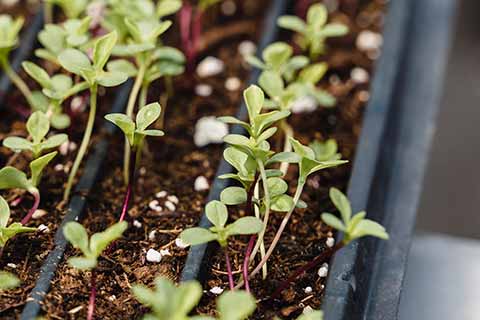Planting for pollinators
There are few more summery sounds than bees buzzing from flower to flower. Or more relaxing sights than watching these useful creatures, powdered with pollen, dip into petals in search of nectar.
But UK bee populations have reduced by about a third in the last 30 years and a big reason is loss of habitats.

We need to plant more flowers for the 270 different species of bees who live in the UK – as well as other pollinators like hoverflies, wasps, beetles, moths and butterflies.
The more flowers we can plant, the more food there is for bees – and they'll be healthier and more likely to survive illness or bad weather.
Why do pollinators matter?
In return for the nectar flowers provide, bees and other insects help them by spreading their pollen and helping them to reproduce. For plants to make seeds, pollen has to get from one plant to another. It does this by sticking to bees and hitching a lift! This is called pollination.
Pollinators don’t just help flowers to grow. Most of the plants we grow for food need to be pollinated. Bees are one of the most effective pollinators out there because they visit lots of plants and carry more pollen between them. In the UK, around 70 crops benefit from visits by bees – for example, broccoli, cabbages and apples. So fewer bees could mean food shortages.
Get sowing and growing
Spring is the perfect time to sow seeds so by summertime, your garden is filled with flowers and buzzing with bugs. The more different types and colours of flowers you can grow, the greater the variety of pollinators you’ll attract. Wildflowers like poppies, foxgloves, cornflowers are always a hit. Marigolds, geraniums and roses too. If in doubt, open flowers, where you can clearly see the central part (like a sunflower or ox-eye daisy) provide easy access to the nectar and pollen.
A word of caution for pet owners: some plants can be toxic if eaten by our furry friends. So if you have cats or dogs, do check before you sow or plant. The PDSA has some good advice on pet-friendly planting at https://www.pdsa.org.uk/pet-help-and-advice/looking-after-your-pet/all-pets/poisonous-plants
Pollinators with longer tongues, such as garden bumblebees, find nectar in tubular petals like foxgloves, penstemons and snapdragons. Honeybees like small flowers, while larger bees avoid them and seek out bigger blooms that can support their weight.
Bees can see blues and purples better than other colours. So they love landing on lavender, buddleia, alliums and catmint. Pollinators also like the flowers on herbs such as rosemary, thyme and chives, for their strong scent.

Plan for pollinators all year round
Most bees are active from March to September. But some bees start to come out of hibernation as early as February. Other species are still active as late as November. So it's good to have flowers around for as long as possible.
Plant a variety of bulbs in autumn – and they'll be the first flowers you see in early spring. Wildflowers start to bloom later in spring. Create a mini meadow to encourage them, by leaving an area of grass unmown. Throw in some wildflower seeds and leave it as a wild wonderland.
Then there are lots of other plants like single-petalled roses, salvias, verbena and dahlias, that insects will love into late summer and autumn. Avoid big, frilly flowers with double petals – pollinators avoid them because it's too hard to find the middle.
Pollinator-friendly plants in The RSPCA Garden
-
Actea simplex 'Brunette
-
Ajuga replans 'Caitlin Giant'
-
Anthriscus sylvestris 'Ravenswing'
-
Astrantia major 'Roma' or 'Alba'
-
Aquilegia vulgaris var. stellata 'Whote Barlow' and 'Black Barlow'*
-
Bergenia cillata*
-
Euphorbia robbiae*
-
Geranium phaeum var. phaeum 'Samobor'*
-
Geranium pratense 'Mrs Kendall Clark'*
-
Digitalis*
-
Cammassia
-
Allium 'Mont Blanc'*
-
Sambucus nigra 'Black Lace'.
-
Viburnum opulus
-
Cenelophium denudatum
-
Valeriana officinali subsp. Sambucifolia*
*May be toxic if eaten by pets
Take our pledge!
If you build a bird box in your garden or outdoor space, don’t forget to tell us! Share a photo, tag us on social media, and use the hashtag #WildlifeFriends
Join RSPCA #WildlifeFriend
There are loads of easy ways to get involved and help wildlife. Sign up as a volunteer and start making a difference today.



Find out more about protecting wildlife in your garden
Want more advice like this?
If you want to receive more advice like this straight to your inbox, and keep up to date with the RSPCA and what we do, sign up to our newsletter

